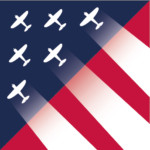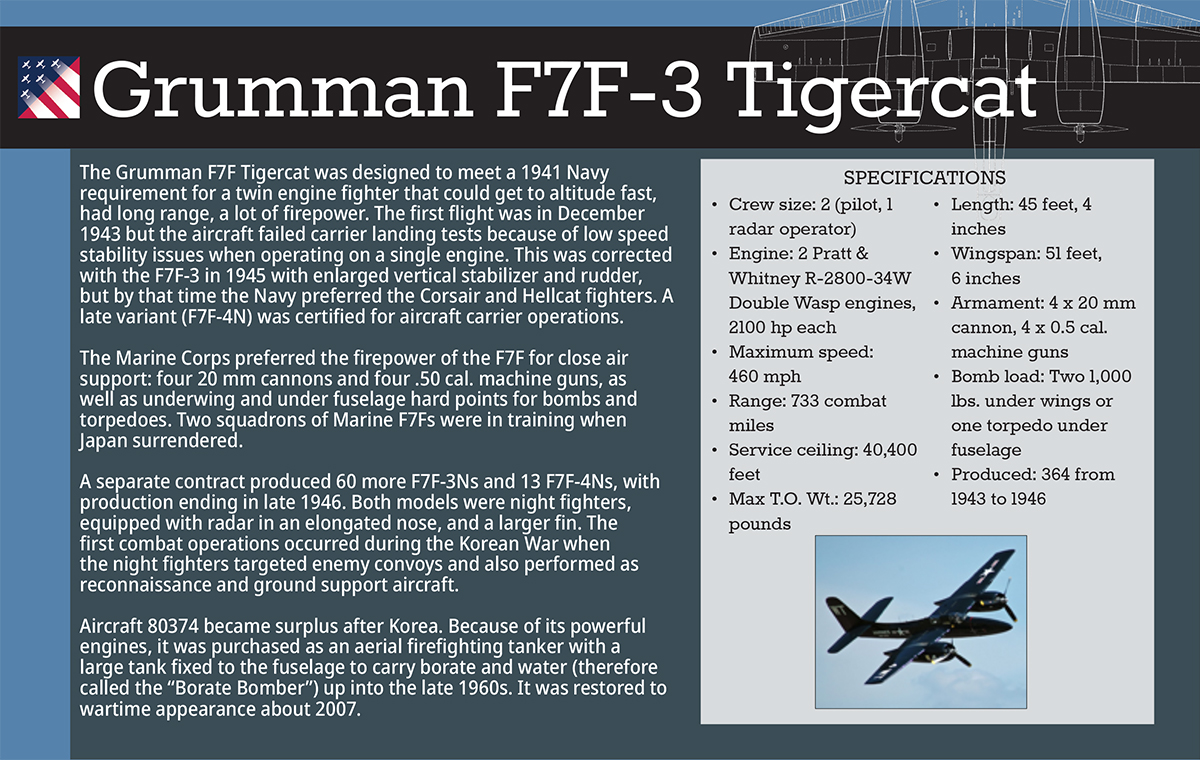The Grumman F7F Tigercat was designed to meet a 1941 Navy requirement for a twin engine fighter that could get to altitude fast, had long range, a lot of firepower. The first flight was in December 1943 but the aircraft failed carrier landing tests because of low speed stability issues when operating on a single engine. This was corrected with the F7F-3 in 1945 with enlarged vertical stabilizer and rudder, but by that time the Navy preferred the Corsair and Hellcat fighters. A late variant (F7F-4N) was certified for aircraft carrier operations.
The Marine Corps preferred the firepower of the F7F for close air support: four 20 mm cannons and four .50 cal. machine guns, as well as underwing and under fuselage hard points for bombs and torpedoes. Two squadrons of Marine F7Fs were in training when Japan surrendered.
A separate contract produced 60 more F7F-3Ns and 13 F7F-4Ns, with production ending in late 1946. Both models were night fighters, equipped with radar in an elongated nose, and a larger fin. The first combat operations occurred during the Korean War when the night fighters targeted enemy convoys and also performed as reconnaissance and ground support aircraft.
Aircraft 80374 became surplus after Korea. Because of its powerful engines, it was purchased as an aerial firefighting tanker with a large tank fixed to the fuselage to carry borate and water (therefore called the “Borate Bomber”) up into the late 1960s. It was restored to wartime appearance about 2007.


